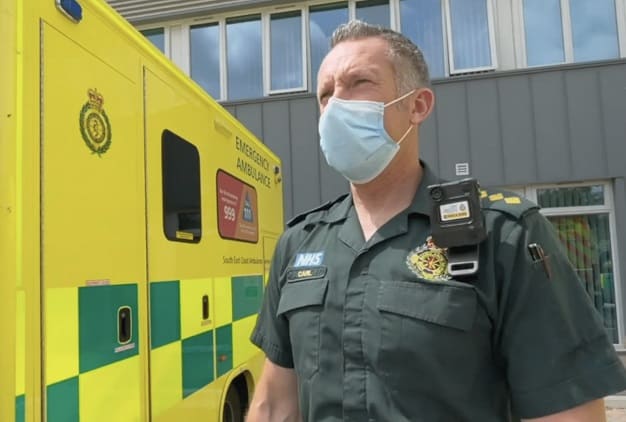
Staff shortages, covid-related absences, increased demand and a lack of space for patients in accident & emergency delaying patient handovers are some of the pressures affecting response times for South East Coast Ambulance Service.
Data released for March shows that Secamb response times for patients with a serious ‘category 2’ condition, such as stroke or chest pains, was on average 39 minutes and 43 seconds. This is double the response standard which should be 18 minutes. For 9 out of 10 calls industry standards dictate there should be a 40 minute response time. For Secamb the 90% rate was one hour and 22 minutes.
For life-threatening calls Secamb is closer to target with an average 9 minutes and 34 seconds response time compared to the NHS standard which is set at 7 minutes. Ninety percent of calls should be responded to in 15 minutes and Secamb achieved 16 minutes 48 seconds.
The data comes from Ambulance Quality Indicators (AQIs) which were introduced in April 2011 for all ambulance services in England and look at the quality of care provided as well as the speed of response to patients.
The figure show that total 999 calls to Secamb compared to the pre-Covid equivalent month of March 2019 were up by 21.9%, pandemic period calls have shown both peaks and more static levels.
SECAmb says it is ahead of the national average for many of the response time performance targets.
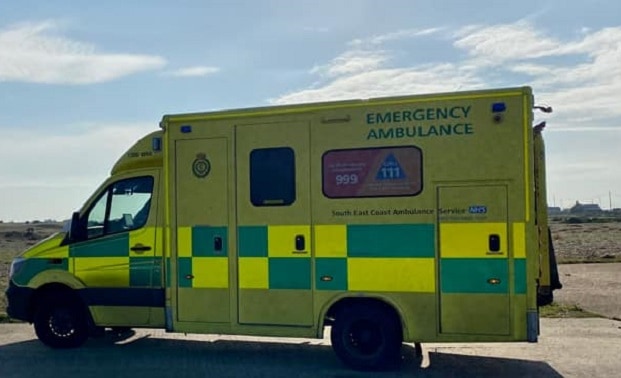
A spokesperson added: “We have been extremely busy in recent weeks and continue to face high demand. We recognise that this means some patients are waiting longer than they should for a response and we are doing everything we can to reach those who need an ambulance response as quickly as possible while prioritising our response to our most seriously ill and injured patients.
“The public can help us manage demand by only calling 999 in the event of a emergency. We also urge the public to make use of alternatives to 999 for help and advice including speaking to their GP, a pharmacist, or by visiting 111.nhs.uk or calling 111.”
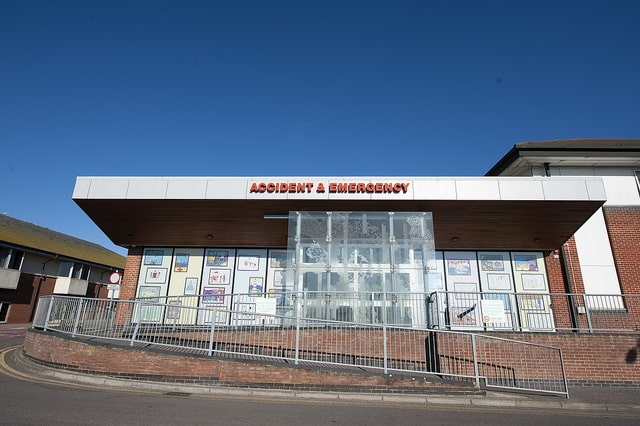
But it is not just Secamb facing backlogs and pressures. Emergency departments are also struggling. At East Kent Hospitals – Margate’s QEQM and Ashford’s William Harvey Hospital – some 17,596 people attended A&E in March with 7,438 of those waiting four hours or more for admission, transfer or discharge.
At a meeting of the East Kent Hospitals board this month, the Trust CEO said there were significant operational pressures and covid numbers were reducing but fluctuating, with a rise in staff sickness absence. The board also heard that there were nursing staffing vacancy challenges particularly at QEQM Hospital.
In the last 12 month period there were 1,264 new staff but 803 leavers, making a net gain of approximately 400 additional staff. An emergency department safe staffing review is also underway with a focus on QEQM.
In a bid to combat staffing issues there has been international recruitment which has increased from 30 a month to 40 nurses coming in during February and partnership working with universities and Kent and Medway Medical School (KMMS) in respect of honorary contracts and increased student placements. Incentives are also offered to secure agency staff cover.
The report said: “At the time of writing (28 March 2022) it is clear that the BA.2 sub-variant of Omicron is now dominant across the UK. With the complete lifting of societal restrictions and waning immunity, this has led to some of the highest levels of Covid-19 yet seen in the community. Although community testing is now very limited, Office for National Statistics (ONS) data confirms this.
“This is reflected in the number of patients in our hospitals who have tested positive for Covid-19 (as well as large numbers attending Emergency Departments and other ambulatory areas). We currently have 201 inpatients, which is more than the peak in May of 2020, though fewer than half of the peak in January 2021.
“In the majority this is an incidental finding and mortality, morbidity and need for critical care remain low, but the operational pressure created is considerable. There is limited scope for moving to a more ‘business as usual’approach to managing Covid-19 until this peak passes.”
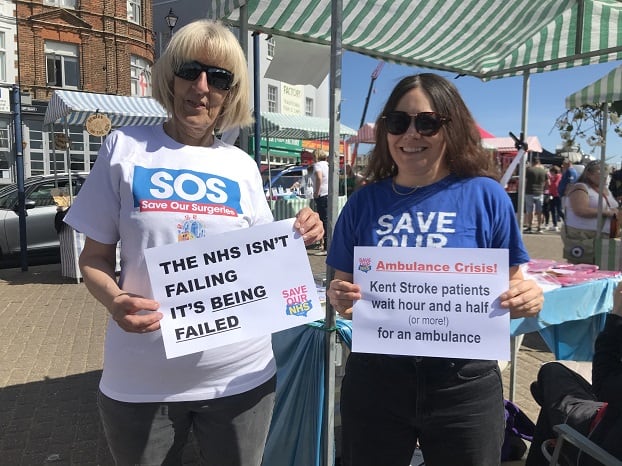
Health campaign group Save Our NHS in Kent (SONIK) says government needs to take urgent action to bring in and retain staff and must pump emergency funds into the health system.
A spokesperson said: “We would like to emphasise that no blame should be put on frontline staff in the NHS and the ambulance service, who are fighting to care for patients under very difficult circumstances; many of them will still be trying to recover from the trauma and exhaustion piled on them in recent years.”
“Professionals are pointing to ongoing staff shortages as being a major part of the problem. We call on our government to urgently take steps. They should be pulling out all the stops to bring more staff in and stop staff leaving, that means addressing conditions and pay, and ending toxic working cultures where they exist.
“Bed cuts in the NHS and social care are another factor – these need to be reversed. We need more beds, not less. Campaigners and unions have been calling on Rishi Sunak and Sajid Javid to provide emergency funding to the NHS to stop it falling over under the backlog caused by the pandemic.
“We want to stress that these dire conditions are not down to the demands of Covid alone, they are the outcome of years of neglect from our leaders. People must understand that the NHS is not failing; it is being failed.”
‘Extreme pressures’
Dr Salwa Malik, South East Coast Regional Chair for The Royal College of Emergency Medicine, said the south east health system is under ‘relentless pressure,’ adding: “The data shows the strain that Emergency Departments in the South East are under. Doctors, nurses, paramedics, and all health care staff are facing extreme pressures. It is a seriously challenging situation. Patients are experiencing long waits in the Emergency Department waiting to be seen and, in the community, waiting for an ambulance.
“Widespread staff shortages and a huge shortfall in beds, these are causing huge delays and problems in the emergency care system. When we have no beds to move patients into, the waiting rooms fill up and ambulances begin queuing outside. Doctors and nurses have no choice but to deliver care in corridors and other inadequate spaces. These are deeply uncomfortable and unsafe practices that are distressing for patients and for staff.
“Morale is incredibly low among the South East workforce, they are overwhelmed and burnt out. Some shifts have fewer staff due to covid related absences, which spreads health care workers even more thinly. We want to deliver the best care possible, but the present circumstances are preventing us from delivering the high-quality effective care we are trained to provide.
“For things to improve in the South East the first step must be for our local Members of Parliament to work with councils and local authorities to improve and expand social care provision. Good social care supports the most elderly and vulnerable patients in their visits to A&Es and ensures a timely discharge when their treatment is complete.”
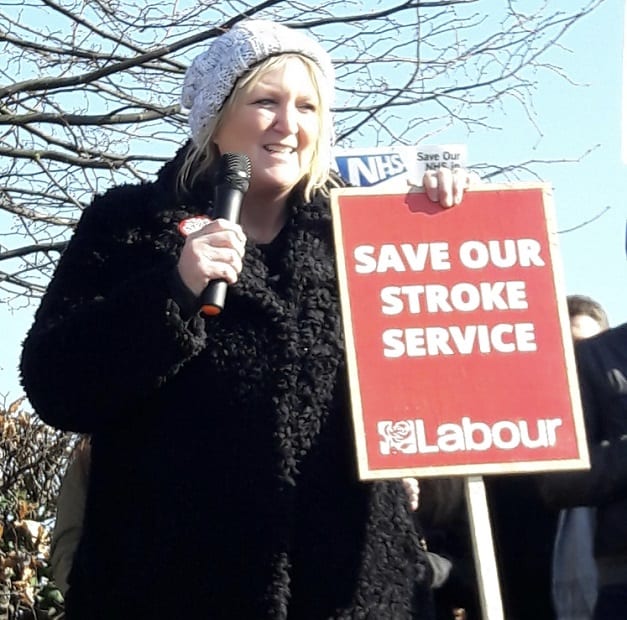
County Councillor Karen Constantine says she has been asking questions about the Trust’s recruitment plans, particularly how proposals to take on 400 new nurses will be fulfilled.
She said: “It’s important to look very closely at the data and plans, to avoid harm being done. I’m concerned that it may be very difficult to recruit 400 nurses, where exactly are they going to come from? I’ve asked Cllr Paul Bartlett, Chair of the Kent Wide Health and Overview and Scrutiny committee HOSC, to invite Hospital Trust Chair Niall Dixon to explain exactly how this recruitment strategy is going to be delivered.”
She says there is a need to know what the current figures are, how overseas recruitment will work and what it will cost, how UK talent will be developed and how under pressure hospitals will carry out training.
She added: “ I’ve also requested the data relating to strokes and access to treatment, particularly urgent admissions from Rachel Jones executive director for strategy and population health.
“I’m particularly concerned about the call to needle time, which, following the reorganisation to provide a HASU, we were assured would be under 2 hours. I’m still waiting for the detail despite writing on April 1 and providing reminders. Delays in ambulances are having a massive impact.
The clinical outcomes data for August 2021 (the most up to date available) shows a mean call to arrival time for the south east of close to two hours. That is very different from what is used in all the docs arguing for HASUs. We were specifically advised call to needle time would be within the two hour critical window.
The public rightly deserves this information. We need a laser focus from our NHS professionals.”

